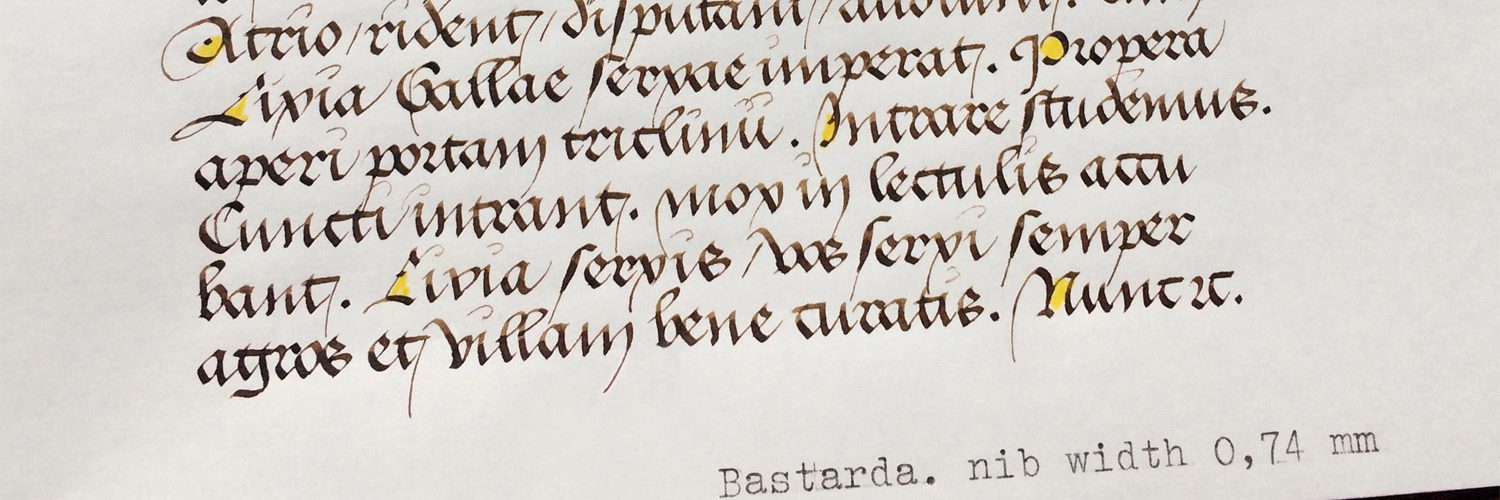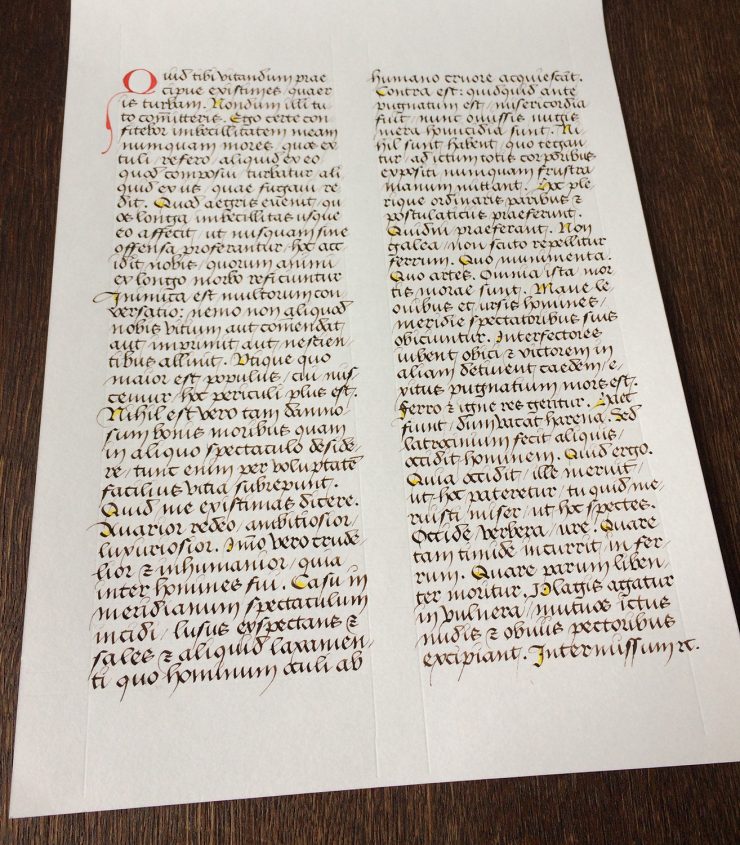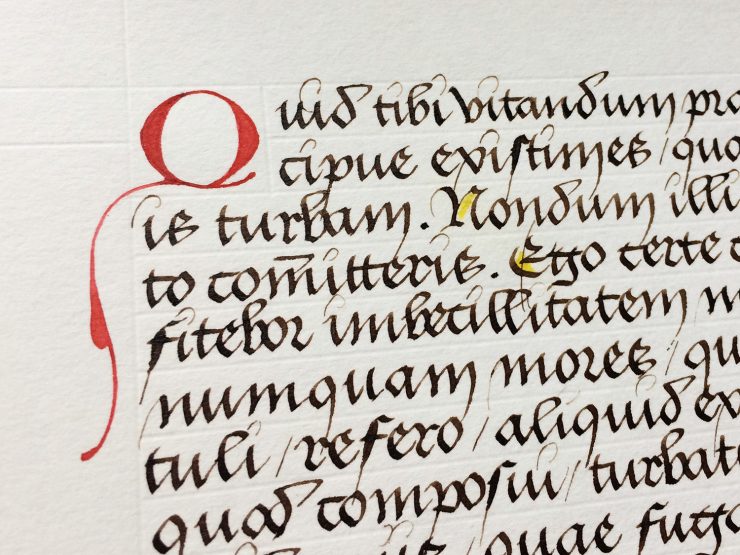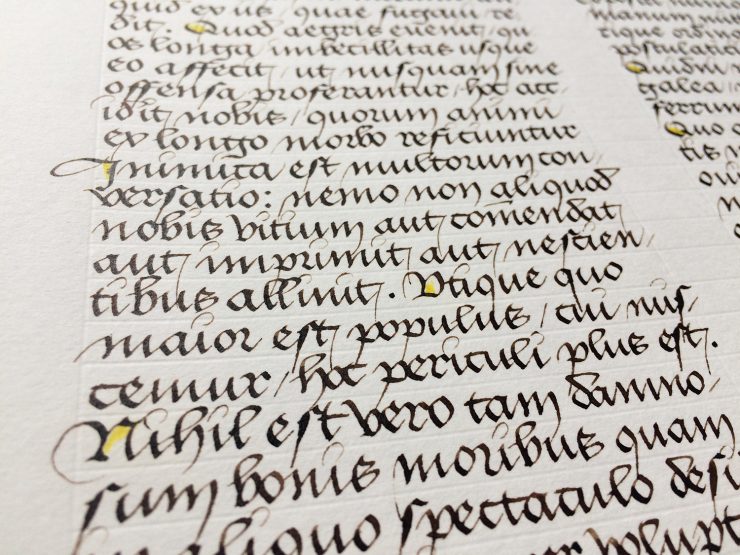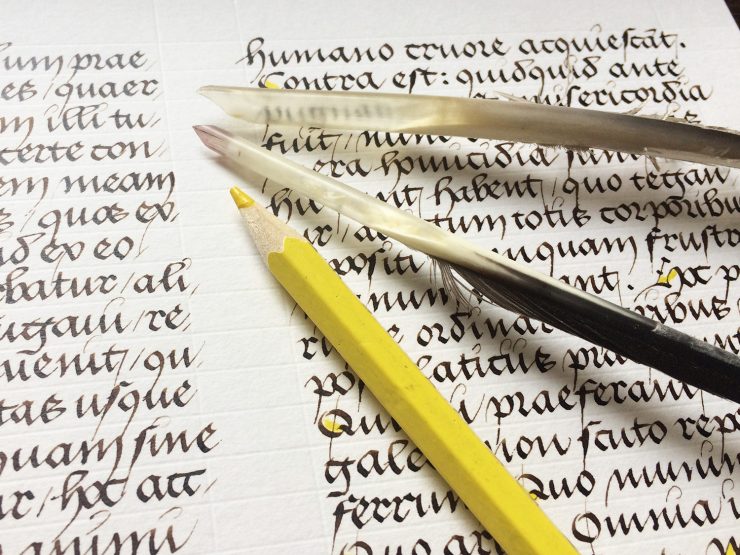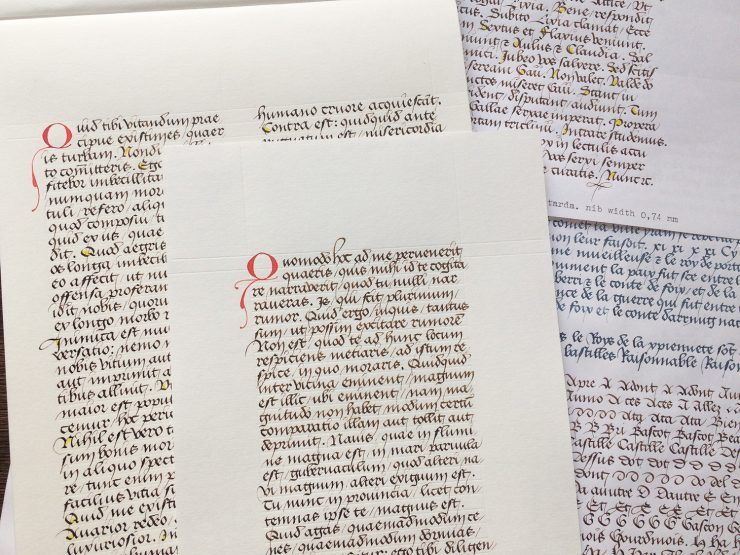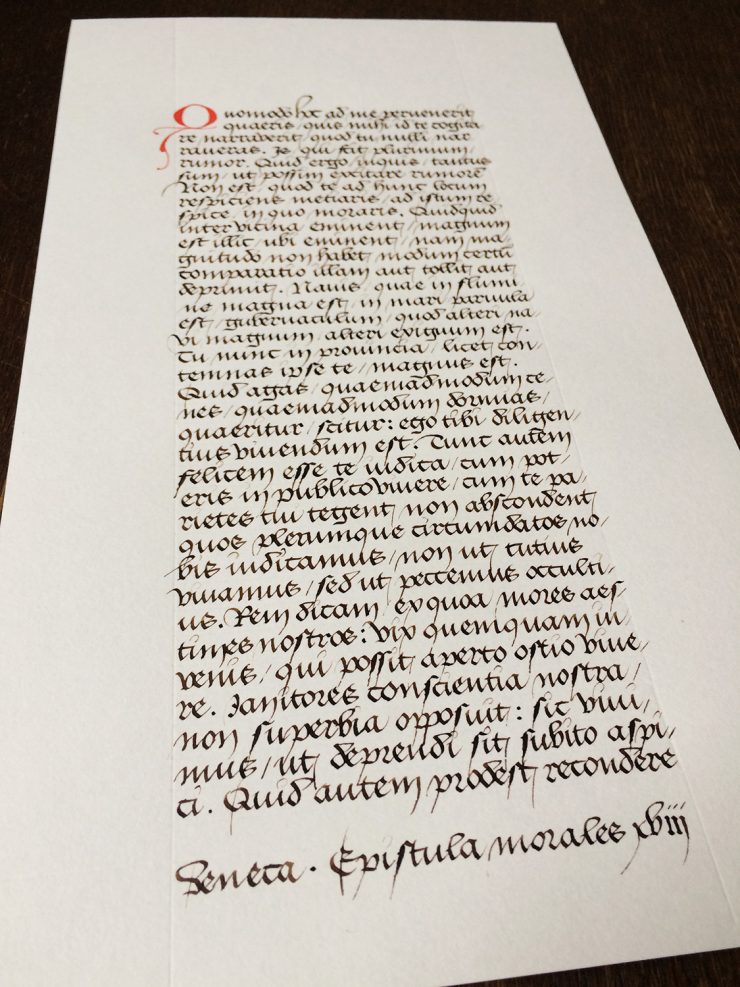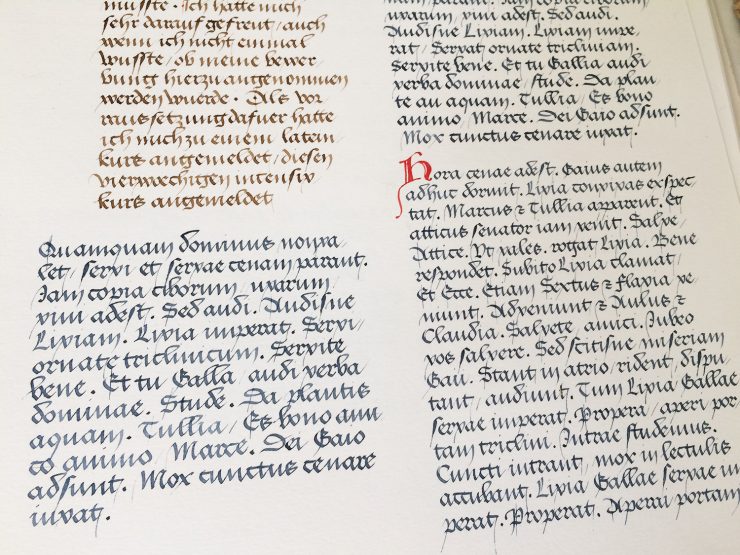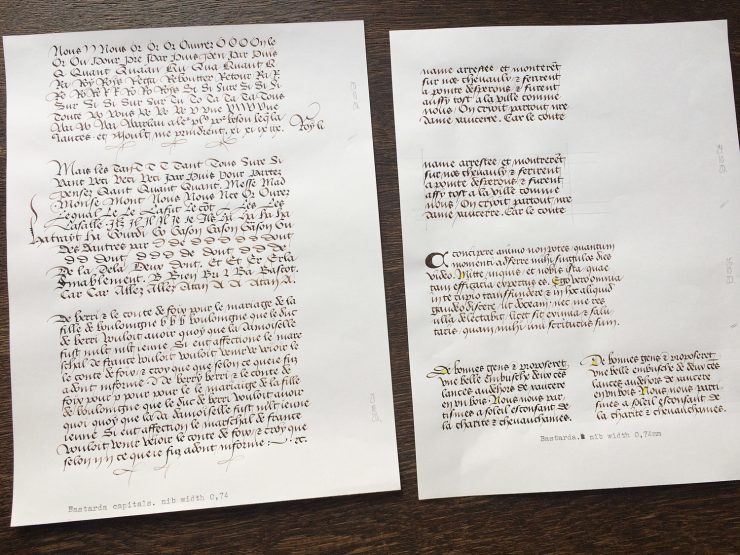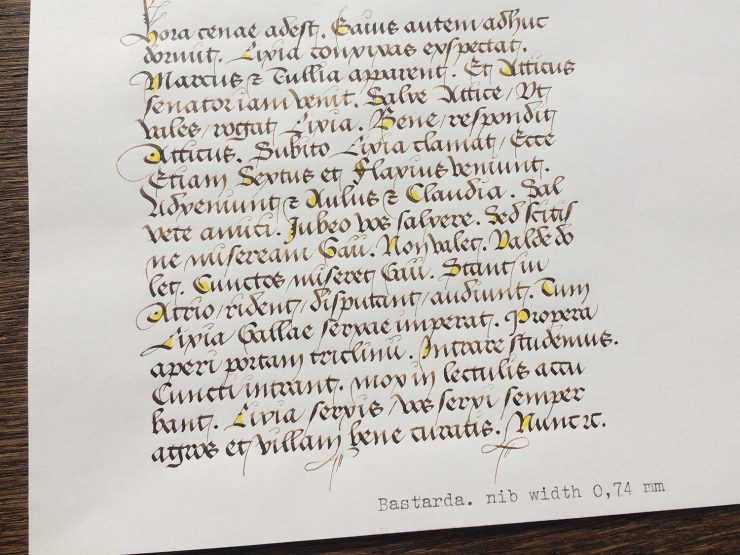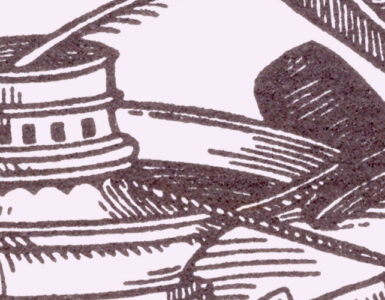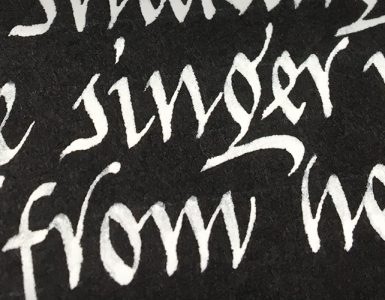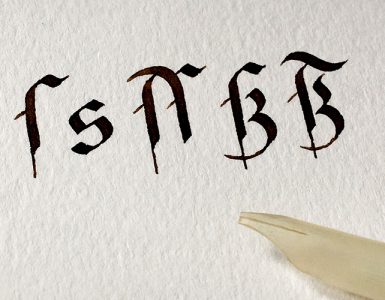“CCC” stands for Chronique Capitals Collection
While I was working with Bastarda in June 2020, I recently came back to this topic. Somehow I felt I still didn’t fully understand it, especially the shapes of a few unusual lowercase letters like u, v, w, and x. So I went back to simply copy old manuscripts. Since I took an intense Latin class this summer, I was confident I would understand some of the content and decipher more words, including their abbreviations. And even though my chosen sample is written in French, I understood more.
As I was diving into this wonderful script, another challenge came up: mastering the capitals. For body text, there are plenty of pages of lowercase letters to imitate. However, capitals were used less in that era, and certain capital letters rarely appeared. For example, there was no K in the 15th century, and I only found one F in my reference manuscript. Therefore I spent quite some time collecting example capitals for a complete alphabet – as complete as it could be I guess – my Chronique Capitals Collection. Now this serves as a basis for writing out other texts.

Here is the source of the capitals:
Chroniques sire JEHAN FROISSART; Froissart, Jean; 1401-1500
ark:/12148/btv1b8438606x
The following shows a text from Seneca called Epistula Morales. I copied it from the study book in my Latin class. Even though I passed my final successfully, it is still difficult for me to understand all of the content. Luckily the letter shapes are more important for my endeavours than translating the sentences.
It was most fascinating to see the change from how much I had not liked the Bastarda before (as if there would be only one!) to how much I now enjoy writing it. By diving in and studying the details about the individual letter shapes I learned to appreciate it. So much so that I now love it.
Needless to say, to get to this result I had to practice many hours, including cutting my quills to the desired shape. Here are a few shots of my exercise sheets, where I polished and refined my letter shapes according to historic models. Maybe some day you’ll see one of them hanging in my gallery.

If you pay close attention, you might have noticed that I’m trying a new technique (actually, this is very old!) to draw the lines. For this dry point ruling I use a sharp device to produce “furrows” as guidelines for the text.

One more new thing to mention: I am super-excited that I found an old typewriter. Yes, here in Berlin people put stuff out on the street which they don’t use any more. I found it last week, cleaned it, and it is working! What a nice addition to my craft – the typed labels make my practice sheets look much more organised.

